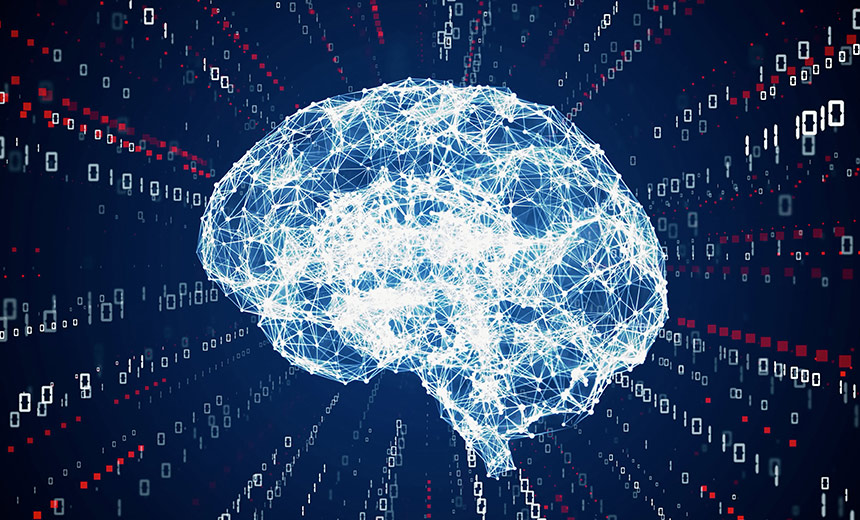Quote for the day:
"There is only one success – to be able to spend your life in your own way." -- Christopher Morley
Smoothing out AI’s rough edges
 When data agents fail, they often fail silently—giving confident-sounding answers that are wrong, and it can be hard to figure out what caused the failure.” He emphasizes systematic evaluation and observability for each step an agent takes, not just end-to-end accuracy. We may like the term “vibe coding,“ but smart developers are forcing the rigor of unit tests, traces, and health checks for agent plans, tools, and memory. ... The teams that win treat knowledge as a product. They build structured corpora, sometimes using agents to lift entities and relations into a lightweight graph. They grade their RAG systems like a search engine: on freshness, coverage, and hit rate against a golden set of questions. Chunking isn’t just a library default; it’s an interface that needs to be designed with named hierarchies, titles, and stable IDs. ... It’s not without complications, though, and there’s a risk of too much delegation. As Valdarrama quips, “letting AI write all of my code is like paying a sommelier to drink all of my wine.” In other words, use the machine to accelerate code you’d be willing to own; don’t outsource judgment. In practice, this means developers must tighten the loop between AI-suggested diffs and their CI and enforce tests on any AI-generated changes, blocking merges on red builds ... We‘re not just talking about traditional vulnerabilities.
When data agents fail, they often fail silently—giving confident-sounding answers that are wrong, and it can be hard to figure out what caused the failure.” He emphasizes systematic evaluation and observability for each step an agent takes, not just end-to-end accuracy. We may like the term “vibe coding,“ but smart developers are forcing the rigor of unit tests, traces, and health checks for agent plans, tools, and memory. ... The teams that win treat knowledge as a product. They build structured corpora, sometimes using agents to lift entities and relations into a lightweight graph. They grade their RAG systems like a search engine: on freshness, coverage, and hit rate against a golden set of questions. Chunking isn’t just a library default; it’s an interface that needs to be designed with named hierarchies, titles, and stable IDs. ... It’s not without complications, though, and there’s a risk of too much delegation. As Valdarrama quips, “letting AI write all of my code is like paying a sommelier to drink all of my wine.” In other words, use the machine to accelerate code you’d be willing to own; don’t outsource judgment. In practice, this means developers must tighten the loop between AI-suggested diffs and their CI and enforce tests on any AI-generated changes, blocking merges on red builds ... We‘re not just talking about traditional vulnerabilities. The EU AI Act: From the experts themselves
 For businesses deploying AI systems, the cost of non-compliance is steep: penalties of up to €35 million or 7% of global turnover are on the table. But some experts believe the real challenge lies in how this framework interacts with competing global approaches. As Darren Thomson, field CTO EMEAI at Commvault, points out, “The EU AI Act is a comprehensive, legally binding framework that clearly prioritises regulation of AI, transparency, and prevention of harm.” ... “The EU AI Act has a clear common purpose to reduce the risk to end users. By prohibiting a range of high-risk applications of AI techniques, the risk of unethical surveillance and other means of misuse is certainly mitigated.” The requirement for impact assessments on high-risk systems isn’t a tick-box exercise and under the Act, organisations deploying high-impact AI systems must carry out rigorous risk assessments before those systems can reach end users. ... Businesses building or deploying AI systems in the EU can’t afford to ignore the AI Act. Understanding risk level and assessing whether your use of AI falls into a high-risk category is a crucial first step to compliance. Companies must also prepare for scrutiny, this is best done by documenting AI systems, auditing them regularly, and staying prepared to conduct impact assessments.
For businesses deploying AI systems, the cost of non-compliance is steep: penalties of up to €35 million or 7% of global turnover are on the table. But some experts believe the real challenge lies in how this framework interacts with competing global approaches. As Darren Thomson, field CTO EMEAI at Commvault, points out, “The EU AI Act is a comprehensive, legally binding framework that clearly prioritises regulation of AI, transparency, and prevention of harm.” ... “The EU AI Act has a clear common purpose to reduce the risk to end users. By prohibiting a range of high-risk applications of AI techniques, the risk of unethical surveillance and other means of misuse is certainly mitigated.” The requirement for impact assessments on high-risk systems isn’t a tick-box exercise and under the Act, organisations deploying high-impact AI systems must carry out rigorous risk assessments before those systems can reach end users. ... Businesses building or deploying AI systems in the EU can’t afford to ignore the AI Act. Understanding risk level and assessing whether your use of AI falls into a high-risk category is a crucial first step to compliance. Companies must also prepare for scrutiny, this is best done by documenting AI systems, auditing them regularly, and staying prepared to conduct impact assessments. Stop drifting through AI transformation: The design principles that actually work
 If drift is our danger, then design must be our answer. But design cannot begin
with blueprints alone. Tempting as it is, we cannot jump to solutions. ... The
principles need to address fundamental issues to ensure that intelligent systems
are designed and implemented to protect human value and values. Doing so, we
must address several questions. How do we preserve human worth? How do we
maintain diverse perspectives? How do we ensure accountability? How do we keep
humans in control? ... The first and possibly most critical of these is that
human dignity must be celebrated and not sacrificed for efficiency. There is a
strong temptation to use AI to view people as overhead, processes as
bottlenecks, and care as inefficiency. ... The second compass is pluralism over
uniformity. Intelligent systems already threaten to divide us into private
realities, each fed by personalized algorithms, while at the same time nudging
us toward uniformity by narrowing what counts as knowledge. Either path is
perilous. ... Thirdly, we must insist on transparency in AI as a condition of
trust. Hidden systems corrode confidence. Even now, algorithms make choices that
affect credit, hiring, parole and healthcare with little visibility into how
those judgments are reached. As machine cognition seeps into every facet of
life, opacity will only deepen the gulf between those who wield the systems and
those who live with their consequences.
If drift is our danger, then design must be our answer. But design cannot begin
with blueprints alone. Tempting as it is, we cannot jump to solutions. ... The
principles need to address fundamental issues to ensure that intelligent systems
are designed and implemented to protect human value and values. Doing so, we
must address several questions. How do we preserve human worth? How do we
maintain diverse perspectives? How do we ensure accountability? How do we keep
humans in control? ... The first and possibly most critical of these is that
human dignity must be celebrated and not sacrificed for efficiency. There is a
strong temptation to use AI to view people as overhead, processes as
bottlenecks, and care as inefficiency. ... The second compass is pluralism over
uniformity. Intelligent systems already threaten to divide us into private
realities, each fed by personalized algorithms, while at the same time nudging
us toward uniformity by narrowing what counts as knowledge. Either path is
perilous. ... Thirdly, we must insist on transparency in AI as a condition of
trust. Hidden systems corrode confidence. Even now, algorithms make choices that
affect credit, hiring, parole and healthcare with little visibility into how
those judgments are reached. As machine cognition seeps into every facet of
life, opacity will only deepen the gulf between those who wield the systems and
those who live with their consequences.With AI Agents, 'Memory' Raises Policy and Privacy Questions
 If deciding what an agent remembers is one problem, deciding how much authority
you have over those memories is another. Here, three issues stand out:
portability, accuracy, and retention. Each raises a different set of policy
challenges, all tied to a deeper question: do you own your digital memories, or
merely rent them? Imagine trying to leave your job but discovering your
executive assistant is contractually barred from joining you. That’s the risk if
memories cannot move with you from one AI platform to another. A simple
copy-and-paste transfer would seem like common sense, but companies may resist:
they can argue that the insights their systems have drawn from your data are
proprietary, or that moving memories introduces security concerns. The reality
is that restricting portability creates enormous “switching costs.” If moving to
a rival agent means starting from scratch, users will be effectively locked in —
a dynamic antitrust lawyers would recognize as a modern twist on classic market
power. The fight over portability is therefore not only about convenience, but
also about competition. A second issue is whether you can edit what your agent
knows about you. Some changes may feel trivial: swapping your listed hometown,
adjusting a phone number, maybe even knocking a few years off your official age.
But once agents become conduits to doctors, insurers, banks, or government
services, accuracy takes on legal weight.
If deciding what an agent remembers is one problem, deciding how much authority
you have over those memories is another. Here, three issues stand out:
portability, accuracy, and retention. Each raises a different set of policy
challenges, all tied to a deeper question: do you own your digital memories, or
merely rent them? Imagine trying to leave your job but discovering your
executive assistant is contractually barred from joining you. That’s the risk if
memories cannot move with you from one AI platform to another. A simple
copy-and-paste transfer would seem like common sense, but companies may resist:
they can argue that the insights their systems have drawn from your data are
proprietary, or that moving memories introduces security concerns. The reality
is that restricting portability creates enormous “switching costs.” If moving to
a rival agent means starting from scratch, users will be effectively locked in —
a dynamic antitrust lawyers would recognize as a modern twist on classic market
power. The fight over portability is therefore not only about convenience, but
also about competition. A second issue is whether you can edit what your agent
knows about you. Some changes may feel trivial: swapping your listed hometown,
adjusting a phone number, maybe even knocking a few years off your official age.
But once agents become conduits to doctors, insurers, banks, or government
services, accuracy takes on legal weight. The Under-Appreciated Sustainability Benefits of Colocation Data Centers
 On balance, colocation data centers don’t always come out ahead on the
sustainability front. Not all colocation facilities offer more efficient cooling
and water management solutions. Some are just as inefficient in these areas as
the typical private data center. Nor is there a guarantee that all colocation
facilities will provide access to renewable energy, certainly not on a
continuous basis. For this reason, businesses that can afford to invest in
sustainability-friendly solutions inside their own data centers may find this a
better approach than using colocation to improve sustainability. It’s important
as well to consider the total cost. ... It’s worth noting as well that public
cloud data centers are also usually more sustainable than private data centers.
This is due mainly to the massive economies of scale of these facilities
(they’re called “hyperscale data centers” for a reason), combined with the high
utilization rates they achieve by renting IT infrastructure to tens of thousands
of different customers using an IaaS model. That said, for companies focused on
sustainability, there are reasons to prefer colocation facilities over the
public cloud. Beyond the perhaps obvious fact that colocation offers much more
control (because it allows businesses to deploy and manage their own servers,
rather than renting servers from a public cloud), it’s also easier to track
efficiency metrics inside a colocation facility.
On balance, colocation data centers don’t always come out ahead on the
sustainability front. Not all colocation facilities offer more efficient cooling
and water management solutions. Some are just as inefficient in these areas as
the typical private data center. Nor is there a guarantee that all colocation
facilities will provide access to renewable energy, certainly not on a
continuous basis. For this reason, businesses that can afford to invest in
sustainability-friendly solutions inside their own data centers may find this a
better approach than using colocation to improve sustainability. It’s important
as well to consider the total cost. ... It’s worth noting as well that public
cloud data centers are also usually more sustainable than private data centers.
This is due mainly to the massive economies of scale of these facilities
(they’re called “hyperscale data centers” for a reason), combined with the high
utilization rates they achieve by renting IT infrastructure to tens of thousands
of different customers using an IaaS model. That said, for companies focused on
sustainability, there are reasons to prefer colocation facilities over the
public cloud. Beyond the perhaps obvious fact that colocation offers much more
control (because it allows businesses to deploy and manage their own servers,
rather than renting servers from a public cloud), it’s also easier to track
efficiency metrics inside a colocation facility.Cyber risk quantification helps CISOs secure executive support
We often see with customers this frequent mistake: investing in security tools just for compliance, but not configuring or using them properly. This can give a false sense of security. Testing means making sure tools are not only in place but also set up and maintained to protect your business. Our best advice is to focus on investing in experienced professionals rather than relying solely on tools. While technology, including AI, continues to evolve, it cannot yet replace the expertise and judgment of seasoned cybersecurity engineers. Skilled people remain the foundation of a strong and resilient cybersecurity strategy. ... By translating cyber risks into financial terms, CISOs can help the board understand the impact. Instead of using broad categories like low, medium, or high, it’s more persuasive to show the potential financial exposures. When risks are presented in financial terms, CISOs can demonstrate how specific projects or investments make a difference. For instance, showing that a $100,000 investment in cybersecurity could lower ransomware risk exposure from $5 million to $1 million creates a compelling return on investment. This approach makes budget approval much more likely. With Cyber Risk Quantification, we can also benchmark a company with their peers on the market, which is also an argument toward the board and other executives.Making your code base better will make your code coverage worse
 You do zero financial assessment of what happens if one particular feature
fails. You are treating every file as if they have equal value and each one must
meet 80% percent code coverage. The file that encrypts user data? 80% code
coverage required. The file that allows a user to upload their profile image?
80% code coverage required. ... There’s a lot of sub-optimal code out there.
Your automated tests can only be as good as the code that it is used to
validate. Your whole test strategy is only worth as much as the features that
they validate. Adding a code coverage tool to a sub-optimal code base with the
hopes that it will magically improve the quality of your application will not
work. It’s also likely to make it a lot harder for your development team to make
it better. ... As a code base evolves, opportunities present themselves to make
improvements. One of the most common practices is to consolidate repeated code.
Your code base might have one or more blocks of code that gets copied and pasted
elsewhere. Having identical code in multiple places is generally regarded as bad
practice, it makes sense to move that repeatedly used block into a single
location. That shared code might still be in the same file or moved into a
separate one. This is the principle of Don’t Repeat Yourself (DRY), as opposed
to Write Every Time (WET) code. Making your code DRYer is generally accepted as
a good thing. Yet this comes at the cost of declining code coverage. Here are
some hypothetical numbers.
You do zero financial assessment of what happens if one particular feature
fails. You are treating every file as if they have equal value and each one must
meet 80% percent code coverage. The file that encrypts user data? 80% code
coverage required. The file that allows a user to upload their profile image?
80% code coverage required. ... There’s a lot of sub-optimal code out there.
Your automated tests can only be as good as the code that it is used to
validate. Your whole test strategy is only worth as much as the features that
they validate. Adding a code coverage tool to a sub-optimal code base with the
hopes that it will magically improve the quality of your application will not
work. It’s also likely to make it a lot harder for your development team to make
it better. ... As a code base evolves, opportunities present themselves to make
improvements. One of the most common practices is to consolidate repeated code.
Your code base might have one or more blocks of code that gets copied and pasted
elsewhere. Having identical code in multiple places is generally regarded as bad
practice, it makes sense to move that repeatedly used block into a single
location. That shared code might still be in the same file or moved into a
separate one. This is the principle of Don’t Repeat Yourself (DRY), as opposed
to Write Every Time (WET) code. Making your code DRYer is generally accepted as
a good thing. Yet this comes at the cost of declining code coverage. Here are
some hypothetical numbers.Build Smart, Test Often: A Developer's Guide to AI Readiness
AI innovation is uncertain. New models, protocols and approaches to AI continue to emerge, making it difficult for organizations to adapt and keep pace. While jumping in blindly risks failure, waiting too long risks losing a competitive edge. ... Another hazard: Governance gaps create hidden risks. Without clear access controls and monitoring, AI systems can expose sensitive data or violate compliance requirements. That's why 79% of CIOs say they need strict governance in place to succeed with AI. However, as AI architectures grow more complex, they become harder to govern, limiting control and increasing enterprise risk. ... Many organizations silo experimentation and data control as if they are unrelated, but in reality, they reinforce each other. With data fragmentization, experiments can produce misleading results. Without a safe environment for experimentation, teams hesitate to deploy AI projects, even when they have the technical ability. ... The path to AI success is all about building the right foundation that enables both confident experimentation and rapid scaling. This starts with simplifying data architectures. Indeed, all surveyed enterprises are consolidating their AI tech stacks because fragmented systems create barriers to effective AI deployment. Teams with these data practices move faster because they can iterate without fear of catastrophic failures.AI Quantisation: Reducing the cost of AI computation across the board
 According to McKinsey’s research on AI empowerment organisations can achieve
their complete AI value only when functional teams access powerful yet practical
tools and models. Quantisation functions as a key method to connect the
available solutions to practical applications. ... Quantisation has
established itself as a powerful solution to tackle this problem. The process of
quantisation simplifies AI model calculations by decreasing their numerical
precision. Most models rely on 32-bit floating point numbers for accuracy, yet
they rarely need such high precision for effective performance. Quantisation
achieves memory reduction and computational load reduction by converting numbers
into 8-bit or 4-bit formats. ... Quantisation-Aware Training involves adding
precision limitations to the model’s training process. The training method
produces models that maintain stable performance while being highly optimised ,
which makes it suitable for healthcare and automotive industries that require
strict accuracy standards. Generalised Post-Training Quantisation or GPTQ has
gained special importance when working with large language models. Through GPTQ
methods, organisations can reduce their models to extremely low precision levels
without compromising their advanced text understanding and generation
capabilities.
According to McKinsey’s research on AI empowerment organisations can achieve
their complete AI value only when functional teams access powerful yet practical
tools and models. Quantisation functions as a key method to connect the
available solutions to practical applications. ... Quantisation has
established itself as a powerful solution to tackle this problem. The process of
quantisation simplifies AI model calculations by decreasing their numerical
precision. Most models rely on 32-bit floating point numbers for accuracy, yet
they rarely need such high precision for effective performance. Quantisation
achieves memory reduction and computational load reduction by converting numbers
into 8-bit or 4-bit formats. ... Quantisation-Aware Training involves adding
precision limitations to the model’s training process. The training method
produces models that maintain stable performance while being highly optimised ,
which makes it suitable for healthcare and automotive industries that require
strict accuracy standards. Generalised Post-Training Quantisation or GPTQ has
gained special importance when working with large language models. Through GPTQ
methods, organisations can reduce their models to extremely low precision levels
without compromising their advanced text understanding and generation
capabilities. How AI-driven automation is the key to unlocking your operational resilience
 From IT outages to global crises, modern organizations increasingly require
rapid, reliable response and recovery capabilities to keep their digital
operations running and their people safe. To a great degree, ever-higher
expectations for operational resilience must be met by significant advances in
automation -- which leading solution providers are making possible by AI and
machine learning. ... The real key? Automation. Sean stressed that true
resilience comes from automating IT incident responses alongside business
continuity plans. Without integration and automation, manual processes are the
enemy of efficiency and cost-effectiveness. This raised the natural question: If
automation is the end (the "what"), what are the means (the "how")? ... Sean
explained how advanced technologies like AI and machine learning are essential
engines driving this automation. xMatters offers native process automation in a
single platform, handling everything from issue detection to resolution.
... With AI agents on the horizon, Sean painted a future where incident
commanders oversee rather than micromanage, as bots handle troubleshooting,
communication, and mitigation. This is the next evolution in making resilience a
superpower for complex IT environments, complete with no-code flow designers and
AIOps for proactive threat hunting.
From IT outages to global crises, modern organizations increasingly require
rapid, reliable response and recovery capabilities to keep their digital
operations running and their people safe. To a great degree, ever-higher
expectations for operational resilience must be met by significant advances in
automation -- which leading solution providers are making possible by AI and
machine learning. ... The real key? Automation. Sean stressed that true
resilience comes from automating IT incident responses alongside business
continuity plans. Without integration and automation, manual processes are the
enemy of efficiency and cost-effectiveness. This raised the natural question: If
automation is the end (the "what"), what are the means (the "how")? ... Sean
explained how advanced technologies like AI and machine learning are essential
engines driving this automation. xMatters offers native process automation in a
single platform, handling everything from issue detection to resolution.
... With AI agents on the horizon, Sean painted a future where incident
commanders oversee rather than micromanage, as bots handle troubleshooting,
communication, and mitigation. This is the next evolution in making resilience a
superpower for complex IT environments, complete with no-code flow designers and
AIOps for proactive threat hunting.





























